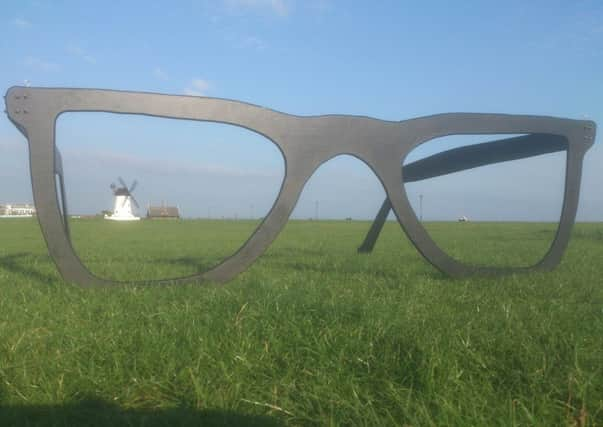How gene therapy could help the blind see again


The radical technique uses a virus to insert a gene into the retina that gives non-light sensitive cells the potential to “see”.
In early tests on blind rescue dogs with an inherited disease similar to the human degenerative eye condition retinitis pigmentosa (RP), scientists were able to restore sufficient sensitivity for the animals to distinguish between flashing and non-flashing lights.
Advertisement
Hide AdAdvertisement
Hide AdBlind mice given the same treatment became as proficient at finding their way around a water maze as normal mice.
The research, detailed in the journal Proceedings of the National Academy of Sciences, paves the way for future clinical trials with people suffering from degenerative eye diseases.
Lead scientist Prof Ehud Isacoff, from the University of California at Berkeley, said: “The dog has a retina very similar to ours, much more so than mice, so when you want to bring a visual therapy to the clinic, you want to first show that it works in a large animal model of the disease.
“We’ve now showed that we can deliver the photoswitch and restore light response to the blind retina in the dog as well as in the mouse, and that the treatment has the same sensitivity and speed of response. We can reanimate the dog retina.”
Advertisement
Hide AdAdvertisement
Hide AdCo-author Dr William Beltran, from the University of Pennsylvania School of Veterinary Medicine, said: “Use of such a clinically relevant large animal model allows us to begin tackling the next challenges on the road to translating this novel therapeutic strategy to human patients.”
RP affects around 25,000 people in the UK and at least two million around the world. An estimated one in 80 of the population carries one of the faulty genes that cause the disease.
The new therapy is said to offer particular promise because, although diseases such as RP destroy the eye’s photosensitive cells, other cells in the retina are often left intact and unharmed.
They include bipolar and ganglion cells, which both transmit visual nerve signals but do not contain light-sensitive photoreceptors.
Advertisement
Hide AdAdvertisement
Hide AdIn tests on mice, the all-important sensitivity gene was successfully inserted into almost every one of the rodent’s million or so retinal ganglion cells. According to the researchers, that should be enough to restore useful vision. The dogs that have been treated are undergoing tests to determine what level of light sensitivity they now have. They were already showing signs of their genetic disease when they were rescued from breeders for use in the study.
“So far we can say that the treated mice can distinguish between steady light and flashing light,” said Prof Isacoff.
“Our next step is to figure out how good they are at telling images apart.”
The gene therapy is one of a number of potential treatments for blindness at early stages of development. In October, scientists from a US company showed that stem cell-derived retinal cells could safely be implanted into patients and improve vision in some cases.
Advertisement
Hide AdAdvertisement
Hide AdAnd, earlier this year, scientists at Oxford University hailed trial results from a genetic therapy for choroideremia, an inherited cause of blindness that affects one in 50,000 people.
Inserting a missing gene prevented progression towards blindness and led to improvements in sight for two men at an advanced stage of vision loss.